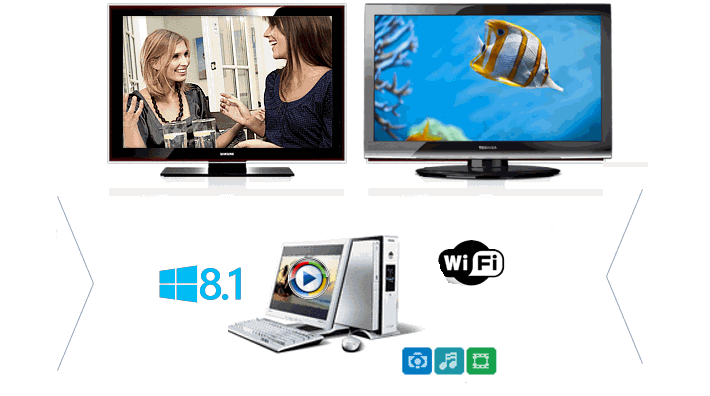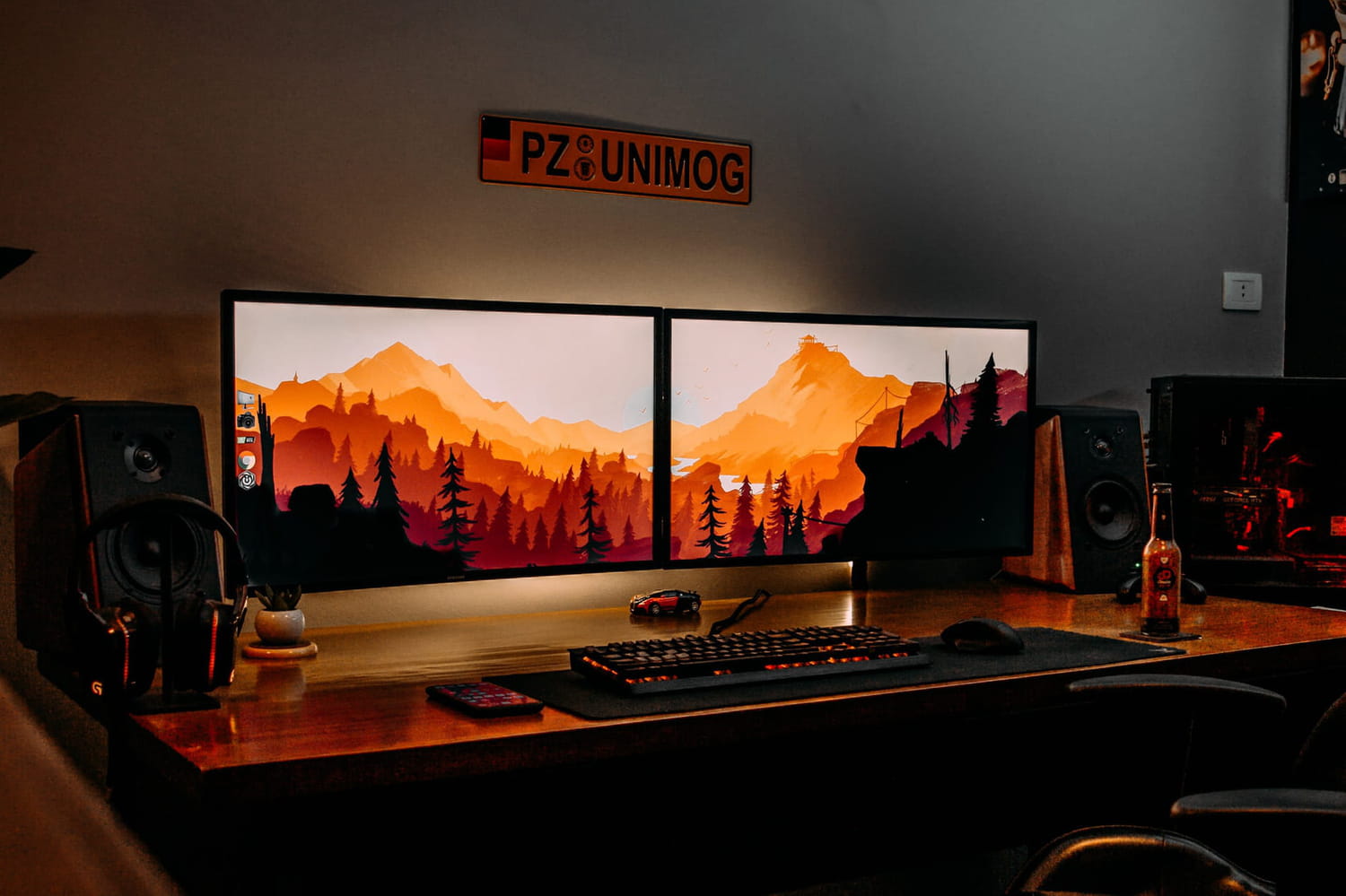-
Prerequisites:

- A Windows 10 PC with Miracast support.
- A TV with built-in Miracast support or a Miracast dongle.
- Both devices connected to the same Wi-Fi network.
-
Enable Miracast on Your PC:

- Open the Action Center by clicking the notification icon in the lower-right corner of your screen.
- Select the “Connect” button.
- If you don’t see the “Connect” button, click the “Expand” button to reveal more options.
- In the list of available devices, select your TV.
-
Enable Miracast on Your TV:

- The exact steps for enabling Miracast on your TV will vary depending on the make and model of your TV.
- Consult your TV’s manual for specific instructions.
- Typically, you’ll need to navigate to the TV’s settings menu and look for a feature called “Screen Mirroring” or “Miracast.”
- Once you’ve found the appropriate setting, enable it.
-
Connect Your PC to Your TV:
- Once both devices have Miracast enabled, they should automatically connect to each other.
- If they don’t connect automatically, you can try the following:
- On your PC, open the Action Center and select the “Connect” button again.
- On your TV, navigate to the Miracast settings menu and select your PC from the list of available devices.
-
Stream Media to Your TV:
- Once your PC and TV are connected, you can start streaming media to your TV.
- To do this, simply open the media file you want to stream and select the “Cast to Device” option.
- In the list of available devices, select your TV.
-
Control the Streaming:
- Once you’ve started streaming media to your TV, you can control the playback using your PC’s keyboard and mouse.
- You can also use the media controls on your TV’s remote control.
Additional Tips:
- Make sure your PC and TV are close to each other for the best connection.
- If you’re having trouble connecting your devices, try restarting both your PC and your TV.
- If you’re still having trouble, you can try using a wired connection instead of a wireless connection.# How To Stream Media From Your Windows 10 PC To Your TV
Executive Summary
In this article, we will explore how to stream media from your Windows 10 PC to your TV, allowing you to enjoy your favorite content on a larger screen. We will discuss the different methods available, the requirements for each method, and the steps involved in setting up and using them. Whether you want to stream movies, TV shows, or even games, we’ve got you covered.
Introduction
Streaming media from your Windows 10 PC to your TV is a fantastic way to enhance your entertainment experience. It allows you to enjoy your favorite movies, TV shows, and games on a larger screen with better sound quality. There are several methods to achieve this, each with its own advantages and requirements. In this article, we will guide you through the top five methods for streaming media from your Windows 10 PC to your TV.
1. Using an HDMI Cable
An HDMI cable is the most straightforward method for streaming media from your Windows 10 PC to your TV. It provides a high-quality, low-latency connection that supports both audio and video signals.
- Direct Connection: Connect one end of the HDMI cable to your PC’s HDMI port and the other end to your TV’s HDMI port.
- Audio Settings: Ensure that the audio output on your PC is set to the HDMI device.
- Display Settings: Adjust the display resolution and refresh rate on your PC to match your TV’s capabilities.
- Content Mirroring: You can mirror your PC’s display onto your TV, allowing you to stream any content playing on your PC.
2. Wireless Streaming with Miracast
Miracast is a wireless technology that allows you to stream media from your Windows 10 PC to a compatible TV without the need for cables.
- Miracast-Enabled Devices: Both your PC and TV must support Miracast to use this method.
- Setup: Enable Miracast on your PC and TV according to their respective instructions.
- Connection: Search for and connect your PC to your TV using the Miracast feature.
- Streaming: Once connected, you can stream any content playing on your PC to your TV wirelessly.
3. Wireless Streaming with Chromecast
Chromecast is a streaming device that allows you to cast media from your Windows 10 PC to your TV using the Google Chrome browser.
- Chromecast Device: You will need a Chromecast device connected to your TV’s HDMI port.
- Google Chrome Browser: Ensure that the latest version of Google Chrome is installed on your PC.
- Casting: Click the “Cast” icon in the Google Chrome toolbar and select your Chromecast device.
- Streaming: Choose the media you want to cast from your PC, such as a YouTube video or a local video file.
4. Streaming Media with DLNA
DLNA (Digital Living Network Alliance) is a standard that allows devices on a network to share and stream media with each other.
- DLNA-Compatible Devices: Both your PC and TV must be DLNA-compatible.
- Media Server: Set up a media server on your PC using Windows Media Player or a third-party DLNA server software.
- Media Player: Use a DLNA-compatible media player on your TV to access and stream media from the media server on your PC.
5. Streaming Media with Plex
Plex is a popular media server software that allows you to organize and stream your media collection to various devices, including your TV.
- Plex Server: Install the Plex Media Server software on your PC.
- Media Library: Add your media files, such as movies, TV shows, and music, to the Plex library.
- Plex App: Install the Plex app on your TV or streaming device.
- Streaming: Access your Plex library from your TV and stream any media file to your TV.
Conclusion
Streaming media from your Windows 10 PC to your TV opens up a world of entertainment possibilities. Whether you prefer using a wired connection with an HDMI cable or wirelessly streaming with Miracast, Chromecast, DLNA, or Plex, there’s a method that suits your needs and preferences. With the right setup, you can enjoy your favorite content on a larger screen, enhancing your viewing experience to the max.
Keyword Phrase Tags:
- Stream Media from Windows 10 to TV
- HDMI Cable Connection
- Wireless Streaming with Miracast
- Wireless Streaming with Chromecast
- DLNA Media Streaming
- Plex Media Server Streaming

This is great! I’ve been wanting to do this for a while, but I didn’t know how! Thanks for the step-by-step instructions. I can’t wait to try it out!
I’m not sure if this will work. I’ve tried other methods before and they didn’t work. But I’m willing to give this a try. I’ll let you know how it goes.
This is a great guide! I’ve been using this method for a while now and it works great. I recommend using a wired connection for the best results.
This is a good guide, but I think there’s a better way to do it. I prefer using a third-party app instead of the built-in Windows features. It gives me more control over the streaming process.
This is the best way to stream media from your PC to your TV. I mean, who needs cables anymore? This is the future!
Oh, wow! This is amazing! I never would have thought of this. I’m so glad I found this article. Now I can finally watch all my favorite shows on my TV without getting out of my chair.
This is great! I’m going to try this right now. I’m going to stream my entire movie collection to my TV. I’ll be the envy of all my friends!
I’m not sure if this is safe. I don’t want to damage my TV or my computer. Is there any risk involved?
I’ve been using this method for a while now and I’ve never had any problems. It’s a great way to stream media from your PC to your TV. I highly recommend it.
I’m curious to know if this will work with my old TV. It’s not a smart TV, but it does have an HDMI port. Do you think it will still work?